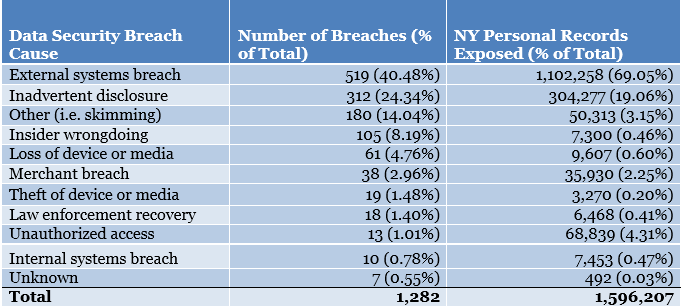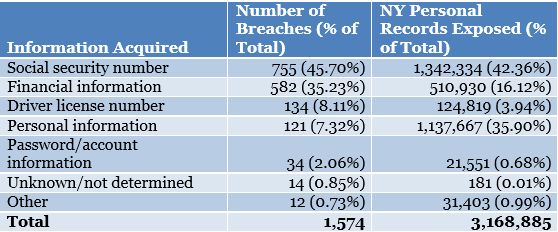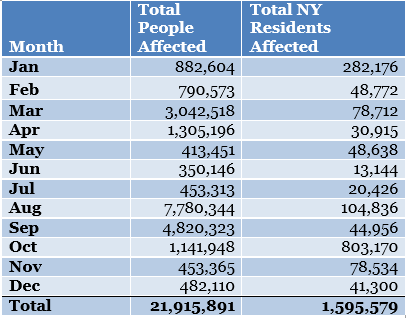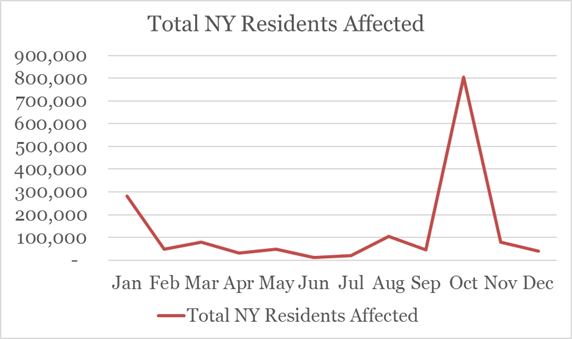Officer Charged With Federal Civil Rights Violation and Filing False Reports
Joon H. Kim, the Acting United States Attorney for the Southern District of New York, and William F. Sweeney Jr., the Assistant Director-in-Charge of the New York Office of the Federal Bureau of Investigation (“FBI”), announced today the unsealing of criminal charges against RODINY CALYPSO, a New York City Correction Officer, in the assault of an inmate at Rikers Island. CALYPSO was charged with repeatedly punching and elbowing the inmate in the head and face without physical provocation while the inmate was handcuffed behind his back, in violation of his rights under the United States Constitution, and with filing a false report in order to cover up the incident. CALYPSO was arrested this afternoon on charges contained in a criminal Complaint and is expected to be presented in federal court later today.
Acting Manhattan U.S. Attorney Joon H. Kim said: “Rodiny Calypso allegedly violated a Rikers Island inmate’s constitutional rights by viciously beating him – without physical provocation – while the inmate was restrained in handcuffs. As we have said before, the protections of our Constitution extend to those in prisons, and this Office will remain vigilant about protecting the rights of all, including those confined within the walls of Rikers Island.”
FBI Assistant Director William F. Sweeney Jr. said: “Today, Rodiny Calypso, a New York City Correction Officer, is charged with subjecting an inmate to cruel, unnecessary, and inappropriate punishment—behavior that simply won’t be tolerated. The rules that apply to the appropriate use of force are specific and clear, and the vast majority of those within the law enforcement community are quick to adhere to them. Today’s charges not only defend the rights of all prisoners to be afforded proper treatment under the law, but also the reputation of those within the criminal justice system who uphold the rule of law; if you don’t, you’ll swiftly be removed from serving in any official capacity.”
According to the Complaint[1] unsealed today in Manhattan federal court:
Rikers Island is a jail complex, located in the Bronx, New York, maintained by the New York City Department of Correction. At the time of his assault, the inmate (“Inmate-1”) was housed in pretrial detention in the Otis Bantum Correctional Center (“OBCC”), a facility that houses, among other inmates, inmates in need of maximum security. Inmate-1 was housed in Dorm 5 North, a dormitory area within the OBCC in which inmates were generally kept in solitary confinement in individual cells for 23 hours per day. The shower facilities within Dorm 5 North were individual stalls, to be occupied by one inmate at a time, and to which inmates were brought handcuffed, then uncuffed through a port in the shower stall door, and then handcuffed again through the port before being brought out of the stalls by correction officers.
The Assault and Cover-Up
Shortly before noon on February 27, 2014, CALYPSO relieved another correction officer at 5 North while Inmate-1 was in the shower. Inmate-1 and CALYPSO had an extended verbal exchange, during which CALYPSO picked up some personal items Inmate-1 had dropped outside of the door through the port. At one point, CALYPSO stepped away from the door and spoke to a fellow correction officer one level down within the dorm area. That person left the dorm area and returned with another officer (“Officer-1”), who looked up at the shower area.
CALYPSO rear-cuffed Inmate-1 for removal and briefly looked down in the direction of the other officer. CALYPSO then opened the door to the shower stall and immediately punched Inmate-1 several times in the face. He followed Inmate-1 into the shower area, where he put Inmate-1 into a headlock and punched him several more times in the head. CALYPSO began to lose his footing at this point, and clung to Inmate-1’s side. Officer-1 arrived in the stall at this point. As Officer-1 restrained Inmate-1, CALYPSO regained his footing and elbowed Inmate-1 repeatedly – approximately five times – in the head. As a result of the assault, Inmate-1 suffered lacerations to his face and the back of his head. The entire assault was captured on surveillance video and witnessed by multiple inmates whose cells were positioned opposite the shower area.
The New York City Department of Correction issues directives governing the circumstances under which the use of force against inmates is appropriate. Under these directives, force is to be used as a last resort, when an inmate in restraints is still dangerous to himself and others. Among other things, the directives prohibit: the use of more force than is necessary to restrain an inmate, control a situation, or protect oneself or others; the use of force out of proportion to the threat posed by an inmate at the time; the use of blows where a control hold, grasping, or pushing would suffice to restrain the inmate; the direction of blows to the head if the use of such blows is otherwise avoidable; and multiple strikes, punches, or kicks where a single blow would be sufficient to stop an inmate’s attack.
After the assault, CALYPSO filled out a “Use of Force Report” form on which he was supposed to report the circumstances of that assault. In that Use of Force Report, CALYPSO attempted to justify his conduct by falsely stating that Inmate-1 had spit on him and attempted to spit on him again. He also mischaracterized and misstated portions of the assault, omitting the punches he delivered while holding Inmate-1 in a headlock and claiming that he had hit CALYPSO in the “upper torso” area.
RODINY CALYPSO, 38, of Springfield Gardens, New York, is charged with one count of deprivation of rights under color of law, which carries a maximum sentence of 10 years in prison, and one count of filing false forms, which carries a maximum sentence of 20 years in prison. CALYPSO faces a maximum sentence of 30 years in prison.
Mr. Kim praised the investigative work of the FBI. Mr. Kim also thanked the New York City Department of Investigation, the New York City Department of Correction, Investigative Division, and the Bronx District Attorney’s Office for their assistance in the investigation, which remains ongoing.
This case is being handled by the Office’s Civil Rights and Public Corruption Units. Assistant U.S. Attorneys Tara M. La Morte and Martin S. Bell are in charge of the prosecution.
The charges contained in the Complaint are merely accusations, and the defendants are presumed innocent unless and until proven guilty.
[1] As the introductory phrase signifies, the entirety of the text of the Complaint and the description of the Complaint set forth below constitute only allegations and every fact described should be treated as an allegation.





